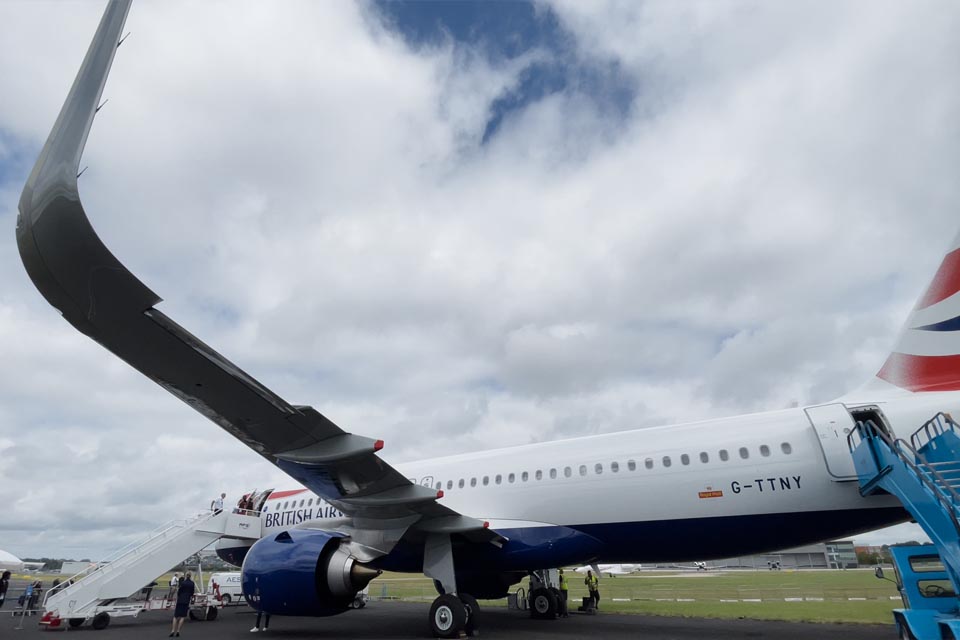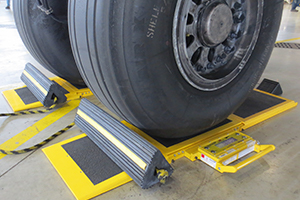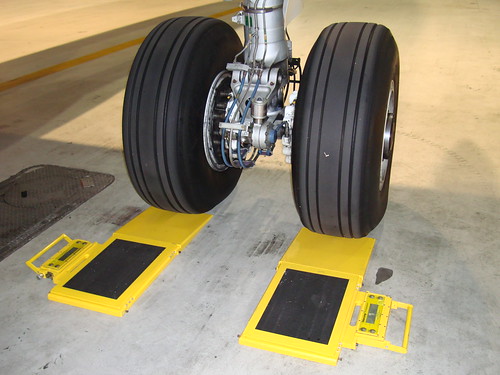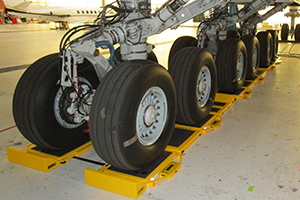- Every four years each aircraft’s diary says it’s time for a weighing session.
- An appointment is made with Weight & Balance in the hangar.
- The aircraft is completely emptied. The kerosene is drained out of the aircraft, right down to the last drop. Then the drinking water and toilet water are removed.
- The Ground Engineers prepare the aircraft for weighing and make sure it really is empty and dry (rainwater can distort the measurement by adding extra weight).
- The Weight & Balance engineer uses a checklist to ensure the contents of the plane have been removed entirely.
- The aircraft is weighed.
- File the weight.
Aerospace
How do they weigh an Aircraft .. !! ?

How do they do it ?
Weighing general aviation (GA) aircraft, helicopters, turboprops, corporate jets, or transport category airliners can be accomplished in two ways: top of jack load cells and platform scales.
Equipment selection is dependent on the operator’s needs and or equipment currently on hand, as well as the airframe manufacturer’s recommendations.
Using load cells, whereby the aircraft is lifted up, or using a weighing platform. For this weighing, the aircraft is pulled by a tow truck onto yellow platforms. Each wheel has itsown set of scales. “They can calculate the total weight by combining the weights measured at all the platforms.
It’s really important that the aircraft is standing exactly horizontally at this point. To ensure this, they use a plumb line, which is a thread with a piece of lead on the end.”
weighing process .!
Weighing Basics
Scales are like torque wrenches and you would not use a 100 foot-pound torque wrench to torque a 20 inch-pound nut.
Why then would you use a 150,000-pound scale system to weigh a light GA aircraft, turboprop, or helicopter? We see this practice a lot where many shops and or technicians use large scale systems to weigh light aircraft, or they have the wrong size cell top to fit a large jet jack point.
There are many military surplus scale units out there, be careful, many of these units still in use are analog meter movements and may or may not be calibrated correctly.
When calibrating scale equipment we always recommend using an aviation-based calibration lab with an Airframe and Powerplant certified technician on staff or returning the unit directly to the manufacturer for calibration.
Some units require specific calibration procedures, software access, and or adapters; to complete the calibration properly always audit your provider to ensure that the proper procedures and equipment are being used. Primary National Institute of Science and Technology (NIST) traceable certifications and test equipment are a must.
Top of jack systems:
The standard aircraft scale is a top of jack, cell-based scale, where each jack point receives a cell-based transducer on the top of the jack.
This system’s advantage is, it is very easy to use and level the aircraft during the weighing operation. The system is easy to transport, light weight, and easy to set up.
Platform systems:
Platforms are available in many weight ranges and sizes, these systems either use ramps or the aircraft can be jacked and lowered onto the platforms during regular maintenance.
Platforms are easy to use and are a choice for many shops that do not have jacks for the many types of aircraft to be serviced.

Resolution and accuracy
As a general rule scales less than 10,000-pound capacity will measure in a 1-pound count and scales over that and up to 25,000 pounds will count in a 2-pound count.
Large jet 50,000-pound scales will measure in a 5-pound count and so on. Always use a scale with the proper size and count resolution. The idea is to pick the right scale size and resolution for the aircraft type and accuracy needed.
Courtesy : Aviationpro, klmblog,

Liked it ?
Share with your friends and Family

Aerospace
When Ratan Tata was denied entry to the airfield at the Aero India show, he waited

During our visit to Aero India 2019, we had the unexpected opportunity to see Ratan Tata at the event, which was a thrilling moment for us. However, there was a surprising hiccup when the security staff didn’t allow him to enter due to a lack of a security pass.
Despite this, he remained calm and patiently waited for about 20 minutes until a member of the Tata team brought him the required pass, after which he calmly proceeded inside. It was a humbling sight, showcasing his composed demeanor even in such situations.
Ratan Tata ji is not only a renowned industrialist but also a trained pilot, holding a pilot’s license. In 2007, he became the first Indian civilian to fly the F-16 Falcon during the Aero India show in Bangalore—a proud moment for the nation.
His passion for aviation extended beyond flying, as he played a key role in shaping India’s aerospace industry. Under his leadership, Tata ventured into manufacturing and maintaining aerospace components while upholding its legacy of quality. Notably, Tata’s collaboration with Airbus to develop and manufacture the C295 aircraft is a testament to its growing influence in the sector.
-

 Aviation2 months ago
Aviation2 months agoMicrosoft Flight Simulator Raises $3 Million to Bring Back the An-225 Mriya
-

 Airlines2 months ago
Airlines2 months agoQantas Engineers Stage Walkout Over Cost of Living Concerns
-

 Airlines2 months ago
Airlines2 months agoQatar Citizens Can Travel to the United States Without a Visa
-

 Aviation2 months ago
Aviation2 months agoQatar Airways bans these new Electronic Devices on plane
-

 Airlines2 months ago
Airlines2 months agoJapan Airlines Rolls Out Free Domestic Flights to International Passengers
-

 Defence2 months ago
Defence2 months agoWhich Country Has the Largest Fleet of Fighter Aircraft?
-

 Airport2 months ago
Airport2 months agoWestern Sydney Airport Welcomes Its First Plane After 6 Years of construction
-

 Aviation2 months ago
Aviation2 months agoDid you know ? Once Boeing 747 carried 1088 passenger in 1991









